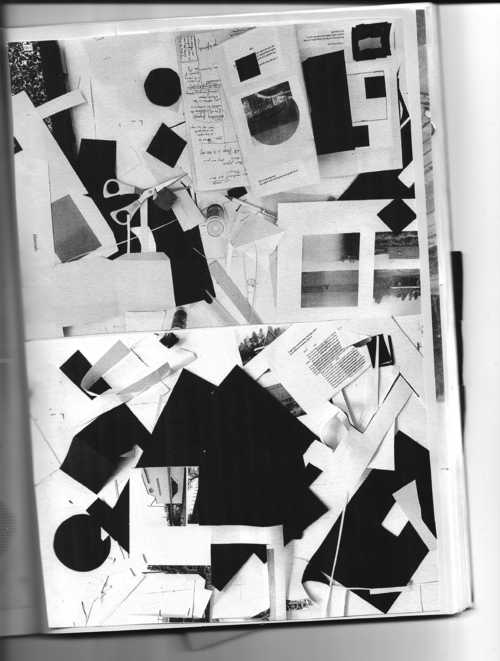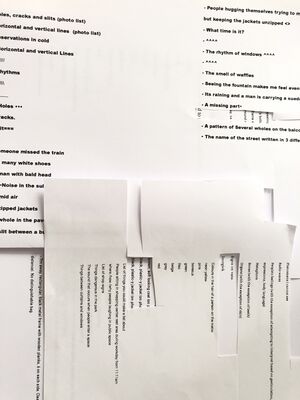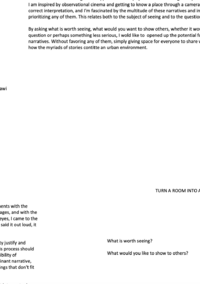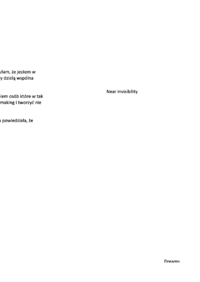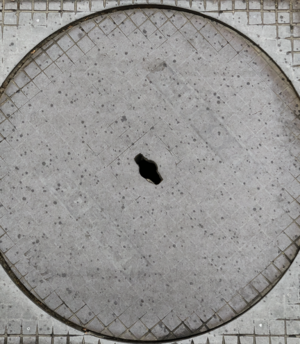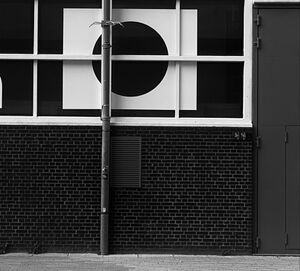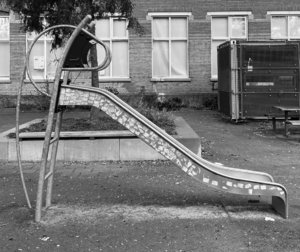User:Mania/Thesis outline-draft and thoughts
Thesis Outline
“In short, spaces have multiplied, been broken up and have diversified. There are spaces today of every kind and every size, for every use and every function. To live is to pass from one space to another, while doing your best not to bump yourself. “ Georges Perec, Species of Spaces and Other Pieces
Perhaps we take these spaces we move through every day for granted. But maybe we can learn to look at them differently; then nothing will stop us from imagining these spaces anew, imagining other uses, other functions, other possible ways of navigating between them. I believe the first step to do this is to pay attention. I want to reflect on how we perceive urban spaces and reimagine these narratives, by working on a magazine for observing and engaging with a city in a new way.
1. How do tools shape what we see?
I'm interested in how even the simplest tools, which impose certain limitations, can open us up to unexpected opportunities. How can a tool with instructions or a script affect seeing our surroundings in a new way?
References to “techniques of the observer”. Crary argues that the way we "observe" things didn't just evolve naturally but was shaped by new technologies, scientific discoveries, and social changes. Before photography and cinema, people’s understanding and experience of sight were very different.
A reference to the artist, educator, and nun Sister Corita Kent, who, using such a simple tool as a cut-out frame in a piece of paper, encouraged her students to observe our surroundings with attention and curiosity. During a zine festival in Groningen, someone told me about her, saying that the paper tool in my project (part of the Scripts to Read the City project) reminded them of what Sister Corita called the finder.
2. Methods for spontaneous encounters - Situationists approach and the art of chance
This shift in how people saw things described by Crary was foundational for what we now call the "society of the spectacle," where we are heavily influenced by images and visual media. The term "society of the spectacle”, introduced by French theorist Guy Debord in his book The Society of the Spectacle, describes a society influenced and dominated by images, advertising, and media, where appearances are more important than authentic experience. Following this thought I would like to dive into "Report on the Construction of Situations" by Guy Debord (1957). In this manifesto, Debord explains the concept of "constructed situations" encouraging interventions in urban spaces that provoke new ways of seeing and interacting with the city.
I see this chapter as particularly important because it could serve as a testing ground for the magazine I'm working on.
3. What it means to be an expert observer? Attentiveness and paying attention
I’m inspired by observational cinema, or cinéma vérité, that aims to present life as it happens. Filmmaker acting more as an observer than a director, avoiding artificial staging is allowing situations to unfold naturally. I am inspired by how people who work in film view their surroundings, and through the process of editing and cutting footage, extract fragments, scenes, and direct our attention. How do they get to know a place through a camera? This tool makes them curious, makes them to talk to others, learn more, investigate, and film, then cut the footage, and rearrange fragments in a new order to show us how they see the world. The act of cutting footage into fragments and rearranging is something that inspire me in terms of what the narrative in the magazine could be.
Dziga Vertov – Man with a Movie Camera (1929) - This documentary film captures a day in the life of a Soviet city through the eyes of a "movie camera man.” There is no one plot, the film maker is experimenting with montage techniques. Vertov’s approach presents the city as a dynamic, interconnected system.
Agnes Varda – Daguerreotypes (1976) - In this film Varda focuses on her own neighborhood in Paris, capturing the lives of local shopkeepers and residents on Rue Daguerre. Althogh Varda's style is not purely observational, as she includes poetic and personal comments, her work encourages a more intimate observation of the city tangled with human stories.
Frederick Wiseman – In Jackson Heights (2015)- Wiseman’s observational, non-interventionist style invites viewers to engage with life as it unfolds. This documentary dives into the diverse neighborhood in Queens, New York, portraying the lives of its multicultural residents and examining issues of immigration, identity, and community.
What documentaries taught me? Deriving from observational cinema
In this context, the book Why I Make Documentaries by director Soda Kazuhiro is especially important to me. In it, he discusses observational filmmaking, speaking about rejecting the idea of preparing a script before shooting and instead creating a story based on discoveries that happen during the process. He also talks about the unexpected discoveries, encounters, and unintentional adventures that the observational filmmaking approach brings. I agree with not strictly adhering to a script, as it’s so easy to cut out even the most interesting scenes simply because they don’t fit a narrowly defined topic. On the other hand, I believe that a script that remains open to interpretation can actually enhance imagination and open up new ways of exploring public space. I believe that scripts and unpredictable encounters can complement each other, and I’m curious how I could explore this further.
If this research document is meant to open me up to knowledge, and discoveries, how can I then share these insights with others? Research isn’t conducted to stay in a drawer but to be shared and engaged with. Since I’m investigating urban intervetion, and the power of materiality to encourage readers to see urban spaces in a new ways, I imagine telling the story and my findings in a very visual way, almost writing with images. Can I present argumentation in a purely visual form in one chapter? I'm not yet sure how exactly I will formulate my final final research question. For now it still gives me a headache. Therefore I still dont have a very clear idea how I want to share this research, but I would like it to serve as a testing ground for the magazine.
References:
Johanathan Crary, Techniques of the Observer Georges Perec, Species of Spaces and Other Pieces Guy Debord, Report on the Construction of Situations(1957) The Situationist International (SI) - Situationist maps, like The Naked City (1957), fragment Paris into emotional zones, challenging the conventional ways cities are navigated and understood. Soda Kazhiro, Why I make documentaries, on observational filmmaking Kevin Lynch, The image of the city Italo Calvino, Invisible Cities Rebecca Solnit, Infinite City: A San Francisco Atlas (2010) Jane Jacobs , The Death and Life of Great American Cities (1961) - Jacobs emphasized the importance of "eyes on the street" and mixed-use urban areas, critiquing large-scale modernist urban planning in favor of organic, community-oriented design. Dziga Vertov – Man with a Movie Camera (1929) Agnes Varda – Daguerreotypes (1976) Frederick Wiseman – In Jackson Heights (2015) Jean-Luc Godard – Alphaville (1965)
Session 4 Project proposal
1 What do you want to make? Is it clear what is being proposed? If not, what could be done to improve this?
A magazine that explores the notion of reading the spaces we inhabit.
A magazine that aims to create a space for diversity, difference, chance, surprises, unpredictability and change. It takes a fragment as a starting point for sharing, relating, linking, layering to envision different forms of seeing and understadning our direct environments.
I would like to create a webzine that would allow me to play with different formats and unrliness of zines; web zines, audiozines, role playing zines, a zine that can be folded into an object… to explore how self publishing methods and distribution redefine how we experience space, and how we can look at it with curious eyes. In zines format I want to play with deconstructing and reconstructing from fragments, embracing multiple perspectives, cinematic references, demands for another possible form of urban life.
2 How do you plan to make it? Do the steps proposed sound feasible? Are there any steps omitted?
I lost track of the time in my initial plan. I was too busy panicking and crying. I spent the first 3 months experimenting with various observation tools. I built a camera obscura from my room, cardboard and tape, a paper pop-up that reveals parts of the city, and I intensively used binoculars as a tool for reading the city. I photographed my street a lot and fragmented the collected photos.
For now, I'm going to focus on my street and collect as many pieces as I can, playing with collage, cutting photos, drawing on them, and reorganizing collected elements, both photos and text.
After a public moment I assume that I will find various connection points and patterns that are emerging. With this as a base I will continue with the magazine, gathering the fragmentation tools and the pieces together.
Then an open call
I would like to organize something like a workshop or a one-time club, where we mix fragments and words and put them together into a new whole. Design of the magazine and print
Website
3 What is your timetable? Does the timing of the project’s realisation sound feasible?
4 Why do you want to make it? Is the motivation for undertaking the project clear? If not, how can this be improved?
A project that will bring me closer to other zine lovers and zine makers, a magazine that will be able to travel around various zine events.
What spark me to make this connection between reading a city and fragmenting? No image of the city is complete, we only see parts. By juxtaposing such different fragments, we can capture the contrast, the tension, and hiow sbjective the experience of the space can be.
5 Who can help you and how? Are there people in your network that might be of help in developing this project?
De Boog - kochani ludzie którzy kochaja robic rzeczy wspolnie i sa tez print enthusiasts.
6 Relation to previous practice: Is it clear how this project builds upon work done before
This project will build upon the experience gained in previous semesters. Starting with research on neighborhoods as learning environments, which I began in the second semester and drawing heavily from the last Special Issue. It continues the exploration of the theme undertaken during the Scripts to Read the City project, where, moving away from an obsession with perfection in public space and examining how deeply rooted expectations are—what is considered normal and what deviates from it in terms of how we behave in public space—I tried, while retaining scripts and roles, to create a series of scripts that encourage spontaneous behavior and exploration of space. The result of the work was a device for reading the city and a guide containing scripts that encourage the discovery of opportunities we might encounter and the viewing of the city from someone else’s perspective. Additionally, a series of workshops were conducted in which participants wrote their own scripts, and then we walked around the city according to a script written by someone else.
The project I now want to implement draws from Scripts to Read the City. It uses the experience gained during the workshops. As a base, I utilize the exploration of the relationship between scripted and spontaneous behavior, the tension between chance and control, and how scripts can enhance unpredictability, stimulate imagination, play, and encourage us to observe space with curiosity, as if we were looking from someone else's perspective. Treating this as a foundation, I want to explore the role that self-publishing and distribution might play in this context. I want to experiment more with printed matter, collecting, selecting, linking, forming connections, highlighting analogies and patterns, to understand if a book can have a special place in shaping the way we perceive our surroundings.
This project studies zines and magazines as shared resources that help us observe, see differently, and encourage us to question reality.
7 Relation to a larger context: Is it clear how the work is embedded in a broader context of art works, theory, etc.?
Zine culture
Future of books
8 References/bibliography: Are there any references or sources you feel are connected to this project? Thesis
***
Thesis
1 Intro aka WHAT do you want to research: Is it clear what this text is about, what is its central research question?
Making books involves collecting, selecting, linking, forming connections, highlighting analogies and patters. Can a book / magazine have a special place in a way we perceive our surroundings? I want to explore books and zines as shared resources that help us observe our direct environments, see differently, and encourage us to question reality. Therefore I find it important to qestion "what are the freedoms, responsibilities, and irresponsibilities of art in the city? What kind of perspectives can artistic research bring to urban space and its realization?" Those are the qestion posed in RUUKKU – Studies in Artistic Research invites new contributions for Issue: Dreaming the city for real – spaces of polyphony, dissonance and coexistence.
Im curious to find out what a magazine can be if I think about it as something that can be folded into an object, distribted, read outside, and what it can bring to urban space. Can it be a tool for seeing our surrondings in a new way?
2 For each proposed chapter: Is it clear what this chapter will look into and is it clear how it relates and works towards answering the central research question?
3 Method aka HOW will you go about answering your research question: Is there a choice of research method and if so, is it a good fit with the central research question?
4 Mode of address aka HOW you want to tell your story.: Is there a choice for a mode of address and if so, does it fit the topic and method of the thesis?
3 Key Texts
- Any recommendations of related works of art, publications, games, literature, theory, etc. are most welcome :)
Inspiration
- Kelli Anderson: https://www.kellianderson.com/books/planetarium.html
- Bruno Munari's books
- French new wave cinema (especially Agnes Varda)• hand cameras • Techniques included fragmented, discontinuous editing, and long takes that allowed actors to explore a scene.• The combination of realism, subjectivity, and commentary
- LOT-EK architectre studio https://lot-ek.com/33496733
- Charles and Ray Eames
Rapid Prototypes
Do you see the connection between the gestures towards the project, the proposed project and the thesis outline? Any feedback here is welcome, from spontaneous and intuitive associations, to feedback on strengths in the sketches and potential synthesis between the three (prototype, thesis, proposal).
deconstrction reconstrction in both text
Sesion 3
Making books involves collecting, selecting, linking, forming connections, highlighting analogies and patters. Can a book have a special place in a way we perceive our surroundings? Books as shared resources that help us observe, see differently, and encourage us to question reality.
I would like to explore different approaches to storytelling. Explore hidden structures by working with tools to fragment and mannuals for building a narrative from fragments / modules to embrace multiple perspectives.
Play with deconstructing and reconstructing from fragments embracing multiple perspectives, cinematic references, demands for another possible form of urban life.
book
that
is
not
bound,
allows for rearrangement and bringing back to the front. Imagining alternative ways of transfromation.
How rearrangement of shapes of content can result in other ways of telling stories?
Key words:
Seeing, moving, relating, grabbing, fragmenting, publishing
- interlinked elements - collection -context and audience -element of surprise (observational cinema) - fragmenting - tools - Relational - Conversational
- Non-linear
- modules - breaking up into smaller parts. Repurposing. Reimagining
- Modularity - im intrested in the modularity as a way to look at things in a new way, allowing to repurpose a d reimagine. Observations in a public space is a big source of inspiration in that case, to see how things are combined together and change their function.
M O D U L A R I T Y - This is what is at the back of my mind. This is the small element that sparks my curiosity.
d e c o n s t r u c t i o n and r e c o n s t r u c t i o n
Questions
How tools shape what we see and what is a role of cataloging those fragments of reality and rearranging their order? What connections and patterns can become visible?
Explore how objects can be used to challenge our perception and expose overlooked aspects.
How using everyday materials (like paper) can be used to reveal hidden aspects of the city and create new forms of engagement with the city?
How can a publishing practice allow multiple voices or perspectives to coexist celebrating unruliness?
How can publishing practices create networks of exchange, where publications are not just produced for consumption but become part of ongoing conversations and relationships?
How the element of surprise influence perception and understanding?
How meaning is constructed when traditional legibility or narrative is removed?
**********
A) What do you want to write about ? Think about what you want to exploreand how do you want to tell your story
pool of ideas:
- Why I want to read a city
- Places camera / tool takes you
- Changing assumptions throug observation or thanks to observation. Changing your understanding of a place. Surprices that are revealed thanks to observing
- Scripts vs non linear narrative (inspired by observational cinema - there is no objectyive truth)
- Participation
B) Outline 3 key issues you want to explore
1. Exploration of how we perceive our surroundings.
What it means to be an expert observer
2. What kind of city we accually want? Larning city - urban space as a space activating diffrent ways of knowing, learning and being together. City as a space for (un)learning practices.
3. Caring and participating through self publishing
Hierarchy and dominant norm - How knowledge production can be more horizontal? De-hierarchicalization of knowledge - cultural exchanges, more intuitive langueage, using text, images to present other narratives Collective creations
How it connects……..
One question and turn that into 3 sub topics:
How I can connect to the city by reading it with others?

